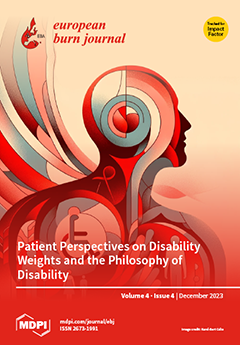Open AccessFeature PaperReview
War at Sea: Burn Care Challenges—Past, Present and Future
by
Matthew D. Tadlock, Theodore D. Edson, Jill M. Cancio, Dana M. Flieger, Aaron S. Wickard, Bailey Grimsley, Corey G. Gustafson, Jay A. Yelon, James C. Jeng and Jennifer M. Gurney
Viewed by 1783
Abstract
Throughout history, seafarers have been exposed to potential thermal injuries during naval warfare; however, injury prevention, including advances in personal protective equipment, has saved lives. Thankfully, burn injuries have decreased over time, which has resulted in a significant clinical skills gap. Ships with
[...] Read more.
Throughout history, seafarers have been exposed to potential thermal injuries during naval warfare; however, injury prevention, including advances in personal protective equipment, has saved lives. Thankfully, burn injuries have decreased over time, which has resulted in a significant clinical skills gap. Ships with only Role 1 (no surgical capability) assets have worse outcomes after burn injury compared to those with Role 2 (surgical capability) assets. To prepare for future burn care challenges during a war at sea, Military Medicine must re-learn the lessons of World War I and World War II. Burn injuries do not occur in isolation during war and are associated with concomitant traumatic injuries. To care for burn casualties at sea, there is an urgent need to increase the availability of whole blood and dried plasma, resuscitation fluids that were ubiquitous throughout the naval force during World War II for both hemorrhagic and burn shock resuscitation. Furthermore, those providing trauma care at sea require formal burn care training and skills sustainment experiences in the clinical management of Burn, Trauma, and Critical Care patients. While burn education, training, and experience must be improved, modern high-energy weapons systems and anti-ship ballistic missiles necessitate concurrent investments in prevention, countermeasures, and personal protective equipment to decrease the likelihood of burn injury and damage resulting from these attacks.
Full article
►▼
Show Figures




